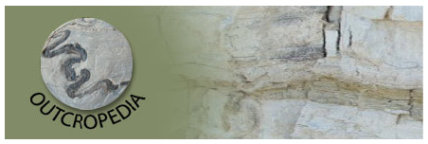This outcrop of micaschist shows a tightly folded spaced foliation of light quartz rich and dark mica rich bands. The regularity of the alternation of the bands suggests that this is not bedding but a tectonic layering. In the quartz-rich layers, a foliation can be seen at a high angle to the layering. If the layering is tectonic, this foliation could be S1 and the layering S2. The foliation S1 is folded (with the layering S2) in the central folds, which must therefore be D3 structures.
This outcrop of micaschist shows a tightly folded spaced foliation of light quartz rich and dark mica rich bands. The regularity of the alternation of the bands suggests that this is not bedding but a tectonic layering. In the quartz-rich layers, a foliation can be seen at a high angle to the layering. If the layering is tectonic, this foliation could be S1 and the layering S2. The foliation S1 is folded (with the layering S2) in the central folds, which must therefore be D3 structures.
Photograph: Cees Passchier
